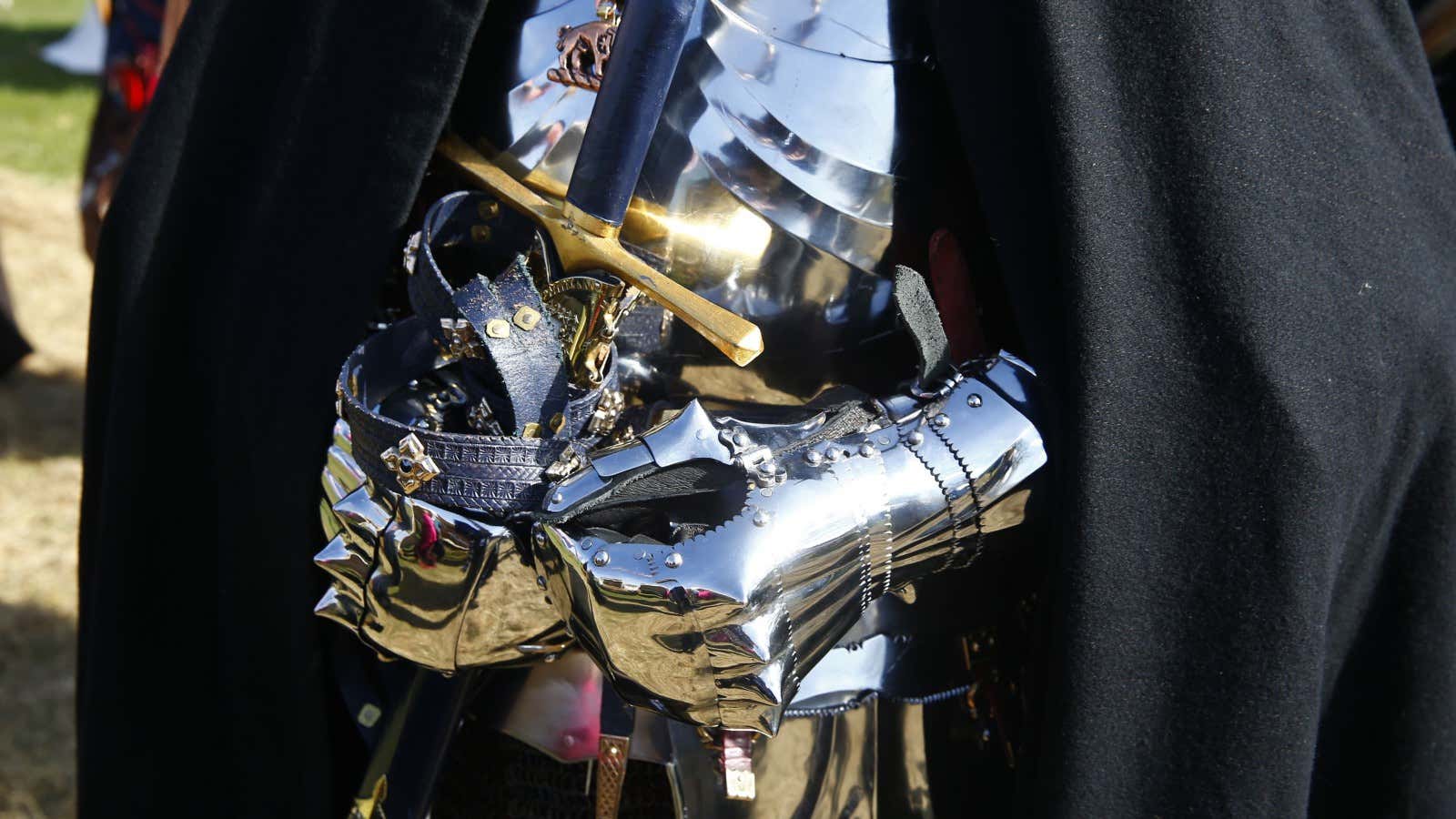“For someone who died 530 years ago and wasn’t on the throne for that long, he has a world following.” So Richard McKinder, a county heritage officer, told the BBC during the re-burial of another Richard, king of England from July 1483 to August 1485, when he was unhorsed and became the last king to die in battle, at Bosworth Field in Leicestershire.
Sunday (March 22) was the culmination of months of interest in Richard III since his battle-scarred skeleton, with its distinctive curved spine, was dug from beneath the tarmac of a car park back in 2013.
Part pageant, part funeral, part historical re-enactment, the ceremony lasted from early morning to sunset—a slow-moving, idiosyncratic orgy of nostalgia for a time people alive today can only imagine.
The journey began at Leicester University, where the king’s mortal remains were “coffined” a week ago. The university had launched the archaeological search that led to the bones’ discovery, and its tests proved their authenticity. The route took in several landmarks from Richard’s rule and his last days.
Bosworth, the site of Richard’s death at the age of 32, was bathed in spring sunshine, populated with period costumes, and loud with the sound of cannon fire:
Suits of armour abounded. On Twitter, watchers worried that the knights might be cold and suggested that a worthy historical project had been swamped by “cranks and C15th re-enactors”.
But as the coffin, first in a hearse and then on a horse-drawn cart, wove its way through the streets of Leicester, thousands lined them:
Some controversy had surrounded the choice of burial place. Back in the 1430s, Leicester, in central England, and York, further north, were embroiled in a bitter rivalry. Some York campaigners wanted the last Plantagenet king to be laid to rest in York Minster, the city’s cathedral, but a court ruling decided the matter in favour of Leicester Cathedral.
The coffin was decorated with the white roses that symbolised the city back when Richard may or may not have been having children murdered in order to secure the throne:
The funeral procession took place just a couple of days after an eclipse darkened the skies above Britain, mirroring events King Richard may have taken as a bad omen 530 years ago. The reburial ceremony, led by the Archbishop of Canterbury, Justin Welby, will be held on Thursday.
